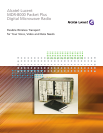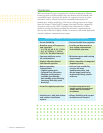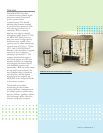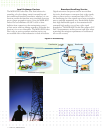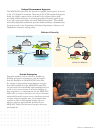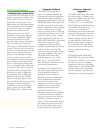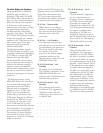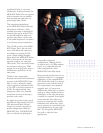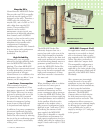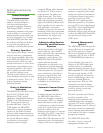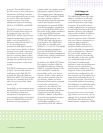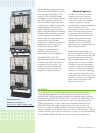
8 Alcatel-Lucent | MDR-8000 Packet Plus
Cost-Saving Features
Industry-High System Gain
The MDR-8000 Packet Plus has the
highest system gain available today.
System gain is the most common
benchmark of performance that
differentiates one radio from another.
Used to determine the link budget
of a microwave hop, it is simply
defined as the mathematical
difference between the radio’s
transmitter output power and the
receiver input threshold. Higher
system gain provides network
operators three distinct advantages.
First, the higher gain can often
allow users to install smaller antenna
systems. This not only saves money
on the cost of the antennas, but also
reduces tower loading. Network
operators can build lighter weight
towers, or reduce their monthly
rent payments if leasing tower space.
Second, higher system gain allows
users to stretch their paths further
than a comparable radio with lower
system gain. This can be especially
important when crossing terrain
obstacles, or simply to eliminate
the significant cost of adding an
additional repeater site. Finally,
higher system gain improves the
path availability. For mission-critical
networks, extremely high path
availability is one of the ultimate
goals, a goal to which the MDR-
8000 Packet Plus is ideally suited.
C
ommon Platform
The MDR-8000 Packet Plus is
based on a common platform for
all frequency bands and capacities.
This approach greatly simplifies
training and maintenance, since all
MDR-8000 Packet Plus radios look
the same and operate in the same
manner. Oftentimes, large networks
consist of radios in two or more
frequency bands, such as 6 GHz for
a long-haul backbone, and 11 GHz
for shorter paths or spurs. Thanks
to the commonality built into the
MDR-8000 Packet Plus, technicians
need only be trained on one
configuration and they will be
capable of maintaining all versions
deployed in their network. The
same advantage also applies to the
capacities available in the radio.
The MDR-8000 Packet Plus
platform supports a mix of DS1,
DS3, OC-3, and 10/100/1000
Base-T Ethernet interfaces to meet
any network requirements.
In addition, the commonality of
the system means that the number
of spare modules required is
minimized, even as radios of
different capacities and frequency
bands are deployed in the same
network. For example, the
transmitter, receiver, and power
amplifier units in any specific
frequency band may be used
for NxDS1, NxDS3, OC-3, or
Ethernet transport. Power supplies,
controllers, and other common
units are the same across all radios,
regardless of frequency band or
capacity. This commonality reduces
the number of spares that need to
be stocked, reducing the capital
budget required for deployment.
I
n-Service Capacity
Upgrades
The MDR-8000 Packet Plus offers
the widest range of interfaces and
capacities available today, with the
ability to provide 4-32 DS1s,
1-3 DS3s, OC-3, or 10/100/1000
Base-T Ethernet in bandwidths up
to 300 Mb/s. Besides having a
capacity to fit virtually any
requirement, users can increase the
capacity of the specific circuit type
(i.e. DS1 or DS3) being used by
merely changing Capacity Keys™
on the transmitter and receiver
modules. This simple change can
be accomplished with the radios
in service on hot-standby systems,
with no outage or downtime
required.
The highly flexible MDR-8000
Packet Plus can grow from 4 DS1s
all the way to 3xDS3 or OC-3 using
the same set of power amplifier,
transmitter, and receiver modules.
Capacity Keys™ and wideband RF
modules allow users to gracefully
migrate to higher capacities, and
eliminate any stranded investment.



